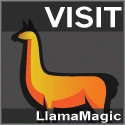HHeLiBeBCNOF
Member
- Joined
- Oct 24, 2014
- Messages
- 93
- Reaction score
- 3
I wrote this batch script a while ago and thought it might be worth sharing with you fine people.
My computer contains about 7 installations of WoW with heavy use of Hard Links, Soft Links, Junctions etc. depending on what I am doing.
Full AFK mode, my Interface folder only has minimal addons. When I'm raiding I will use a different wow directory with a different set of addons loaded.
All of this make using the Battle.net launcher very much a pain, this script was my solution.
I also wrote a powershell script which generates new WoW installations but I'm not sure how useful to anyone that would be, if there is any interest I will post.
This is a the code for the batch file (.bat file extension).
This file has to be placed in the same directory as your WoW executable, you can make a shortcut to this batch and place the shortcut anywhere.
So, what is actually going on here?
setlocal
If you put this in your batch scripts, any Environment Variables you create within the script will not be accessible outside the script.
They are created for the duration of the script and are destroyed when the script terminates.
set filepath=%~dp0
The set command allows you to create or modify existing Environment Variables. In this case we are creating a variable called "filepath".
We are giving the filepath variable a value of "%~dp0".
Decoding this value is beyond the scope of this post, suffice it to say it resolves to the the FULL path name the batch file was launched from, this means this batch file has to be in your WoW directory.
set filename=wow.exe
Again, creating another variable, this time called "filename" which has the name of WoW's executable as it's value.
start %filepath%%filename% -noautolaunch64bit -d3d9
The start command allows you to launch an application outside the context of the CMD window, if this wasn't here the CMD window would remain open until you closed WoW.
%filepath% this is the variable that was created in the previous line, wrapping '%' around a string is the syntax for calling an Environment Variable in CMD/batch.
%filename% is the variable for the name of WoW's executable, -noautolaunch64bit prevents 64bit from launching, -d3d9 forces DirectX 9 mode, instead of 11 because %reasons%.
My computer contains about 7 installations of WoW with heavy use of Hard Links, Soft Links, Junctions etc. depending on what I am doing.
Full AFK mode, my Interface folder only has minimal addons. When I'm raiding I will use a different wow directory with a different set of addons loaded.
All of this make using the Battle.net launcher very much a pain, this script was my solution.
I also wrote a powershell script which generates new WoW installations but I'm not sure how useful to anyone that would be, if there is any interest I will post.
This is a the code for the batch file (.bat file extension).
This file has to be placed in the same directory as your WoW executable, you can make a shortcut to this batch and place the shortcut anywhere.
Code:
setlocal
set filepath=%~dp0
set filename=wow.exe
start %filepath%%filename% -noautolaunch64bit -d3d9So, what is actually going on here?
setlocal
If you put this in your batch scripts, any Environment Variables you create within the script will not be accessible outside the script.
They are created for the duration of the script and are destroyed when the script terminates.
set filepath=%~dp0
The set command allows you to create or modify existing Environment Variables. In this case we are creating a variable called "filepath".
We are giving the filepath variable a value of "%~dp0".
Decoding this value is beyond the scope of this post, suffice it to say it resolves to the the FULL path name the batch file was launched from, this means this batch file has to be in your WoW directory.
set filename=wow.exe
Again, creating another variable, this time called "filename" which has the name of WoW's executable as it's value.
start %filepath%%filename% -noautolaunch64bit -d3d9
The start command allows you to launch an application outside the context of the CMD window, if this wasn't here the CMD window would remain open until you closed WoW.
%filepath% this is the variable that was created in the previous line, wrapping '%' around a string is the syntax for calling an Environment Variable in CMD/batch.
%filename% is the variable for the name of WoW's executable, -noautolaunch64bit prevents 64bit from launching, -d3d9 forces DirectX 9 mode, instead of 11 because %reasons%.
Last edited:





